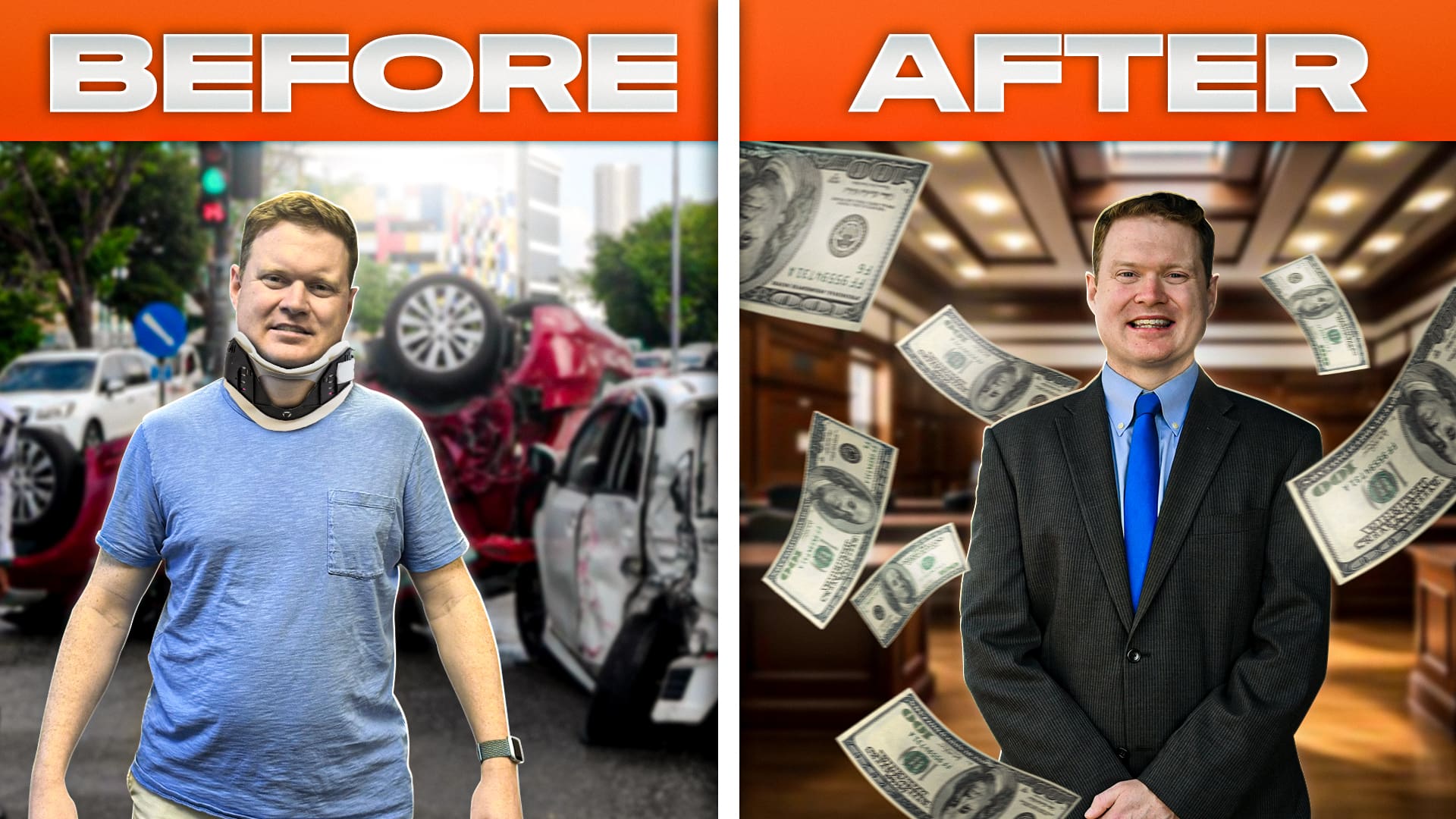Introduction to the Trick
The trick I’m about to teach you in this video can help any injury victim with a valid legal claim get paid a reasonable amount in a timely manner. This trick works for every type of personal injury case involving an insurance claim, whether it be a car accident, slip or trip and fall incident, dog attack incident, or any other type of personal injury claim.
Ethan’s Story
To illustrate how this trick works, let me tell you the story of my past client, Ethan. Ethan was only 18 years of age when he had his motor vehicle accident. His accident happened when he was a passenger in a vehicle driven by a good friend of his. The friend was driving too fast when he went around a curve, lost control of the vehicle, and struck a tree. This was a severe accident that hospitalized Ethan. His friend was clearly at fault for the accident.
Deciding to Pursue a Claim
I remember first speaking with Ethan. He was debating whether or not he should pursue a claim against his friend. I assured him that we would not have to pursue any of his friend’s money or assets. We would only go after his insurance company for payment for the claim against his friend. After speaking with Ethan and his father, he decided to pursue the claim. I signed him up as a client and filed an insurance claim with his friend’s automobile insurance company.
Initial Written Demand
I immediately sent a written demand asking for payment. The insurance company dragged their feet. A little over a month went by and they still hadn’t responded to the written demand I sent out. I knew I had to put some more pressure on the insurance company, so I pulled out one of the old tricks I had up my sleeve that I used in many of my cases, especially in cases worth more than the available policy limits.
The Trick: Time-Sensitive Demand
What I did was I sent a follow-up written demand to the insurance company. Only this time I put in writing that our demand would expire at exactly 5 pm Eastern Time, 30 days from the date I sent this follow-up written demand. In many of my cases, I do this when I send out the initial written demand package, but in Ethan’s case, I sent this written demand after a month went by and we still had not received a response. I also informed the other driver’s insurance company in writing that this was the only opportunity they had to settle the case within their insured driver’s policy limits and that I wanted to ensure that this particular insurance company had a clear opportunity to fully resolve Ethan’s claim. Furthermore, I informed the insurance company that Ethan’s case was one where we would ask for more than the policy limits at trial. Now, since this was Ethan’s friend, we certainly weren’t going to do that, but I wasn’t going to tell the insurance company that.
Result of the Demand
This got the insurance company moving much faster. Within hours of sending this letter, the insurance company offered us the policy limits. Not even a day went by after sending the follow-up demand letter and we got a policy limits offer in writing. We ended up settling Ethan’s case for $125,000 after we subsequently settled with the underinsured motorist insurer.
Why the Trick Works
Putting an expiration date on a demand offer in an injury case puts pressure on the insurance company. I recommend this tactic to be used when your case is worth more than the policy limits and you’re making a demand for the policy limits. This puts pressure on the insurance company because they are legally obligated to act in good faith, meaning they must deal with injury claims fairly, honestly, and in a sincere manner. If an insurance company breaches their duty to act in good faith, they risk paying out even more, either to the injury victim or their insured for exposing them to a judgment in excess of their policy limits.
Implementing the Trick
By placing a reasonable expiration date on a written demand offer, you put pressure on the insurance company. Giving them 30 days to respond is generally seen as reasonable. After sending your written demand with an expiration date, the insurance company adjuster you’re working with may ask for additional time to respond. I usually do not grant this extension request, especially in cases where my client has significant injuries and their case is clearly worth over the policy limits. You can simply tell the adjuster that you believe 30 days to be sufficient to review your claim. If you stick to your guns, have a case with damages valued over the available policy limits, and have made a time-sensitive written demand, you have a shot at a big payout within the time you set as the expiration date.
When Offers Fall Short
The thing is, what happens when you have made a time-sensitive written demand offer, but the insurance company makes an offer below what you asked for in your demand? If that happens, you have to ask yourself if you want to take your case to trial. In this video about to pop up here, I’ll tell you the things you need to consider when debating on whether you should take your injury case to trial.
Final Advice
Lastly, if you’ve been injured in a car accident, slip or trip and fall incident, or dog attack incident in Kentucky, remember: don’t wait, call Tate.








Recent Comments